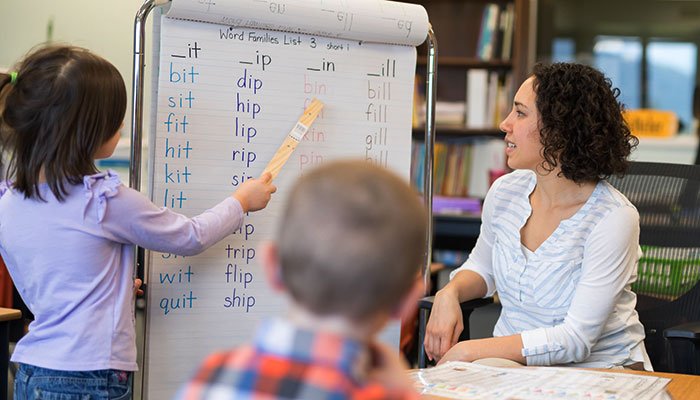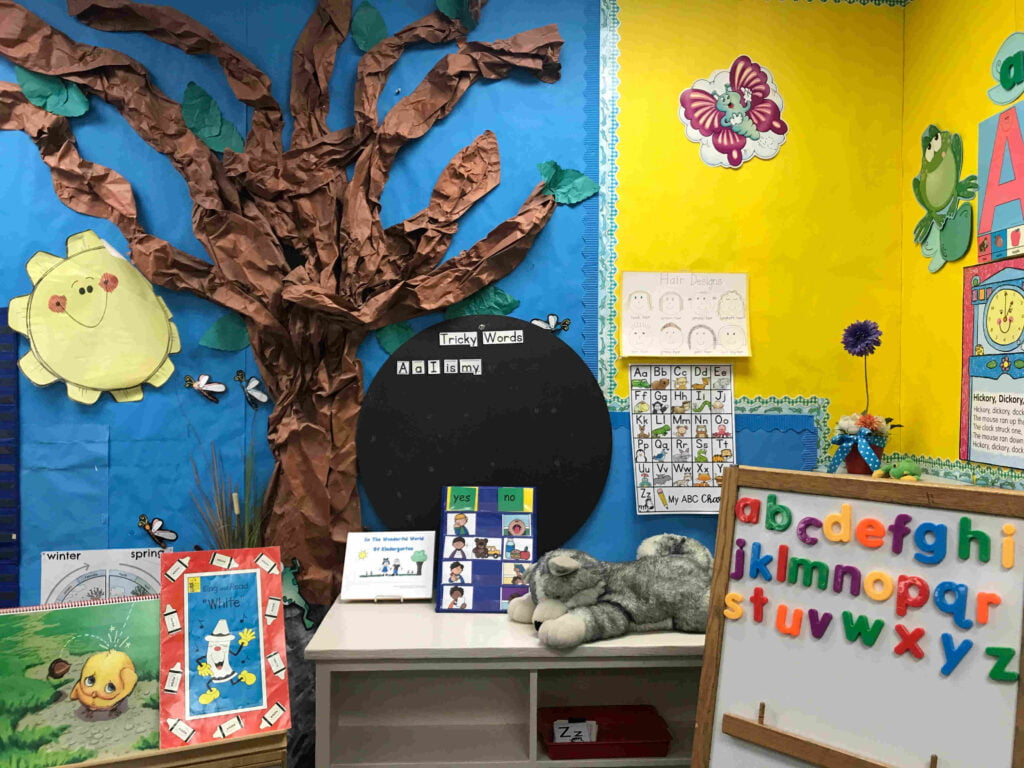For anyone to learn a language, accurate identification and learning of the sounds used in the language is necessary and Phonics tries to teach that.
Unlike the alphabetical order of teaching, which goes straight from teaching A to Z and its usage in words and phrases, the Phonics way of teaching focuses on learning the different sounds a letter may make when used in any word. This way of teaching better equips an individual to tackle and easily pronounce an unfamiliar word.
Let’s dive deep and understand what are the best approaches to teach Phonics.
Let’s Understand Different Types of Phonics First
Phonics is a method of teaching children how to read and write a language by demonstrating the relationship between the sounds (phonemes) and their corresponding letters (graphemes) in the language.
On a global scale, there are two approaches to teaching Phonics – Systematic Phonics and Non-Systematic Phonics.
Non-systematic
Here phonics is never taught directly to children but is a part of their literature-based activities. They emphasize reading and writing, basal reading which is a sub-type of the non-systematic approach and uses special textbooks which are written for the sole purpose to teach reading.
This approach is faced with several downsides – sometimes the content of these textbooks may emphasize a “reading for understanding” approach which will be difficult for students of young age as they not only have to capture the letter sound correlation, but they will also need to understand the text and its meaning.
This entire textbook-based approach furthermore feels rigid and limited to teaching a child, who at their age are often very keen to explore.
Systematic
The second approach is the systematic approach, one where importance is placed on learning the letter-sound correlations and developing the relations to blend different sounds to pronounce a word fluently.
Individual articles by the Scholastic publishing company and Speech Academy Asia have mentioned that the systematic approach to phonics is by far the most effective phonics approach being used in Schools and courses.
Unlike the previous approach, the correlations between the sounds and their letters are sequentially, and explicitly, and the children are given adequate time to practice and explore their new sounds.
You can check out our Phonics Power-Up Program for more details.
The systematic approach is further categorized by how the children are taught:
Synthetic Phonics
One of the popular teaching methods, the children are taught a set of sounds and their corresponding letters in isolation. After repetition and practice, they attain a certain level of proficiency from where they are taught to blend those into pronounceable words.
For example, the teacher will teach how to pronounce the letter ‘P’ ’A’, and ’T’, after which the child will be able to pronounce the words PAT and TAP.

Analytical phonics
Unlike the previous method where the correlations are taught in isolation, here the sound is taught along with its usage in different words. During a session, the first letter of the word is the one being taught and remains the same across different words.
For example, the letter being taught can be ‘T’ and the children will be taught how to pronounce words like Tank, Tap, Tall, etc.
Analogy Phonics
Pain, Train, Main, Gain – Notice a common pattern amongst the series of words, the suffix stays the same. Such words which share some common features of the pattern are called word families.
Analogy Phonics introduces word families to children to help them identify the pattern, once the child identifies the pattern, they will be able to decode an unfamiliar word without any issue.
Embedded Phonics
A less sought approach to teaching reading, phonic elements are taught along with reading books by the tutor, and the letter sound correlations are taught as and when such moments arise along the course of reading the text.

Best Approaches to teach Phonics to Kids
As a Parent or a Teacher, you will be interested in teaching your child but you might be having questions regarding what age you should start teaching and how to do it.
The best age to learn Phonics is during their childhood at the age of 5-6, at this age, they excel at learning implicitly, through observation and repetition.
When it comes to learning, it’s best done in classrooms along with other children and at the same time, equal efforts need to be made at home by the parents to ensure that the child learns Phonics properly.
Here is a list of fun activities that you can do with your child to learn Phonics:
1. Fun with Word Families
Play a game with your child of saying words from the same word family one after the other, in this way you are helping them to pronounce and identify new words.
For example, You can start by saying the word “Ball” after which the child will have to say a word from the same family like “Hall”, “Call”, “Fall” and so on.
You can find more info here.
3. Read rhyming books and songs
Reading will always be a necessity to keep on developing a \ language, although for a child it has to be enjoyable. And what better way to do it than in the form of rhymes.
For example, there are plenty of rhyming songs like Humpty Dumpty and Baa Baa Black Sheep which you can sing along with your child.
2. Pick a sound and make words around it
Here’s a fun little game for your little one. You can pick any letter sound and let your kid find new words around it.
For example, let’s pick the letter – “U”
Q.What sounds does it make?
Ans: “ue”, “oo” and “ew”
They all sound the same. Now what words can you make with them?
Let’s check out –
My shirt is blue.
The monkey lives in the zoo.
I read the news.
This method of teaching Phonics has proved quite effective in our Learning Centre.
Michelle, one of our happy mothers had to say this about our Phonics Courses –
“Because we have a domestic helper at home, my child could speak and understand English, I wouldn’t say it was perfect, but he wasn’t afraid to use simple English to express himself. After taking the Phonics course at Fun To Learn, he has even started to try reading with our helper or me before bedtime. I’d say the result is beyond my expectation.“
Read More on this article here.
Conclusion
Phonics is the way to go forward to start learning English as it is the building block of learning to read, and they form the foundation of literacy. Childhood serves as the best age to learn anything and gain proficiency along the way, and to do so proper teaching and guidance are necessary to ensure favorable outcomes.




